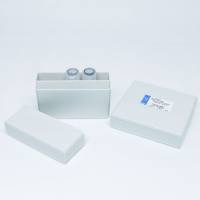Spinal Cord Injuries: Principles and Methods for Outcome Assessment
互联网
互联网
相关产品推荐

Recombinant-Rat-Transmembrane-protein-35Tmem35Transmembrane protein 35 Alternative name(s): Spinal cord expression protein 4 TMEM35 gene-derived unknown factor 1
¥10262

HB Western blotting Principles and Methods
¥223

Recombinant-Human-Potassium-channel-subfamily-K-member-18KCNK18Potassium channel subfamily K member 18 Alternative name(s): TWIK-related individual potassium channel TWIK-related spinal cord potassium channel
¥12194

PDGFD抗体PDGFD兔多抗抗体spinal-cord derived growth factor-B protein antibody抗体PDGFD Antibody抗体
¥440

Anti-Complex spinal cord protein sample Antibody (L7/3)
¥1968
相关问答

